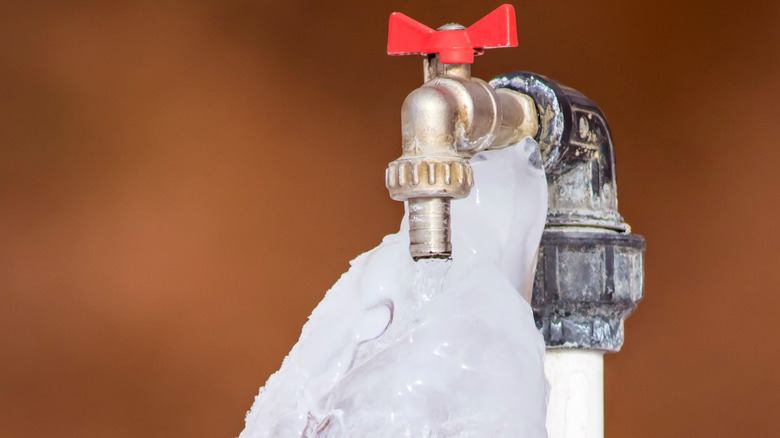The author is making several great points related to Prevent Frozen Pipes overall in this content on the next paragraphs.

Winter can ruin your plumbing, specifically by freezing pipes. Here's how to avoid it from taking place and what to do if it does.
Introduction
As temperature levels decrease, the risk of icy pipelines increases, potentially causing pricey repairs and water damage. Recognizing just how to prevent frozen pipelines is important for house owners in chilly environments.
Avoidance Tips
Protecting prone pipelines
Cover pipes in insulation sleeves or utilize heat tape to protect them from freezing temperature levels. Concentrate on pipelines in unheated or external areas of the home.
Heating techniques
Keep interior areas effectively warmed, especially locations with pipes. Open up closet doors to enable warm air to circulate around pipelines under sinks.
Just how to determine frozen pipelines
Search for decreased water circulation from faucets, uncommon smells or sounds from pipes, and visible frost on revealed pipelines.
Long-Term Solutions
Structural modifications
Think about rerouting pipes away from outside walls or unheated locations. Add additional insulation to attic rooms, basements, and crawl spaces.
Upgrading insulation
Purchase top notch insulation for pipes, attics, and walls. Correct insulation assists keep constant temperatures and reduces the risk of icy pipes.
Shielding Outdoor Pipes
Garden tubes and outside faucets
Separate and drain garden hose pipes prior to winter. Install frost-proof spigots or cover exterior taps with shielded caps.
Understanding Frozen Pipes
What triggers pipelines to freeze?
Pipes freeze when revealed to temperature levels listed below 32 ° F (0 ° C) for extended durations. As water inside the pipelines ices up, it expands, putting pressure on the pipeline walls and possibly triggering them to break.
Risks and damages
Frozen pipelines can cause water disruptions, residential or commercial property damages, and costly repair services. Burst pipelines can flooding homes and trigger considerable structural damages.
Indicators of Frozen Water Lines
Determining icy pipelines early can stop them from bursting.
What to Do If Your Pipes Freeze
Immediate actions to take
If you believe icy pipelines, keep faucets open to alleviate pressure as the ice melts. Utilize a hairdryer or towels soaked in hot water to thaw pipelines slowly.
Final thought
Protecting against icy pipelines requires aggressive procedures and fast feedbacks. By recognizing the reasons, indicators, and preventive measures, property owners can shield their plumbing throughout cold weather.
5 Ways to Prevent Frozen Pipes
Drain Outdoor Faucets and Disconnect Hoses
First, close the shut-off valve that controls the flow of water in the pipe to your outdoor faucet. Then, head outside to disconnect and drain your hose and open the outdoor faucet to allow the water to completely drain out of the line. Turn off the faucet when done. Finally, head back to the shut-off valve and drain the remaining water inside the pipe into a bucket or container. Additionally, if you have a home irrigation system, you should consider hiring an expert to clear the system of water each year.
Insulate Pipes
One of the best and most cost-effective methods for preventing frozen water pipes is to wrap your pipes with insulation. This is especially important for areas in your home that aren’t exposed to heat, such as an attic. We suggest using foam sleeves, which can typically be found at your local hardware store.
Keep Heat Running at 65
Your pipes are located inside your walls, and the temperature there is much colder than the rest of the house. To prevent your pipes from freezing, The Insurance Information Institute suggests that you keep your home heated to at least 65 degrees, even when traveling. You may want to invest in smart devices that can keep an eye on the temperature in your home while you’re away.
Leave Water Dripping
Moving water — even a small trickle — can prevent ice from forming inside your pipes. When freezing temps are imminent, start a drip of water from all faucets that serve exposed pipes. Leaving a few faucets running will also help relieve pressure inside the pipes and help prevent a rupture if the water inside freezes.
Open Cupboard Doors
Warm your kitchen and bathroom pipes by opening cupboards and vanities. You should also leave your interior doors ajar to help warm air circulate evenly throughout your home.

We hope you enjoyed reading our excerpt about Preventing and dealing with frozen pipes. Thank you so much for finding the time to browse our short article. Appreciated our blog posting? Please quickly share it. Let somebody else discover it. Thank-you for going through it.
Request An Estimate